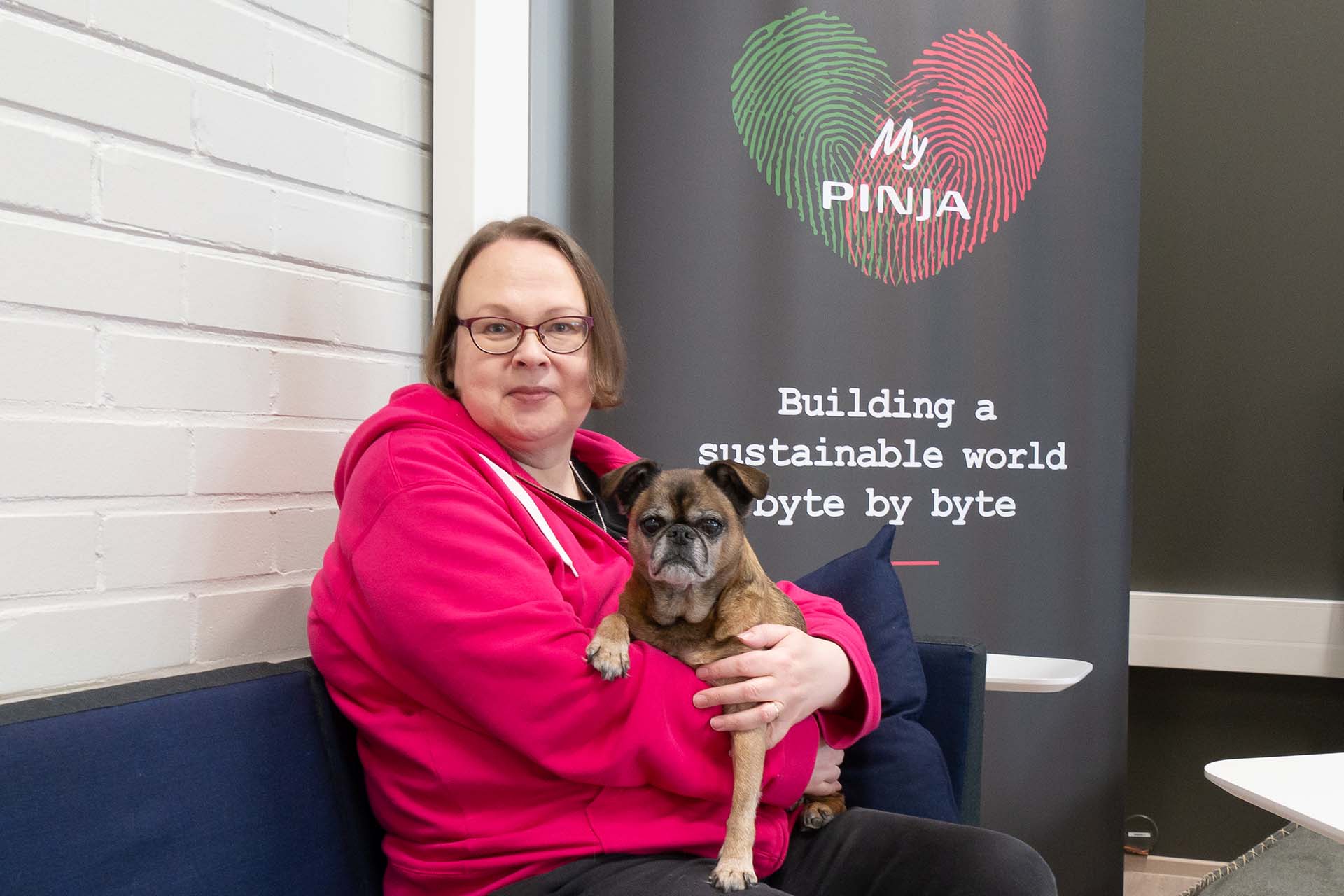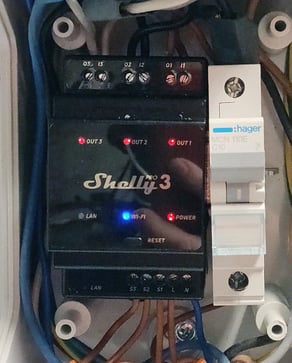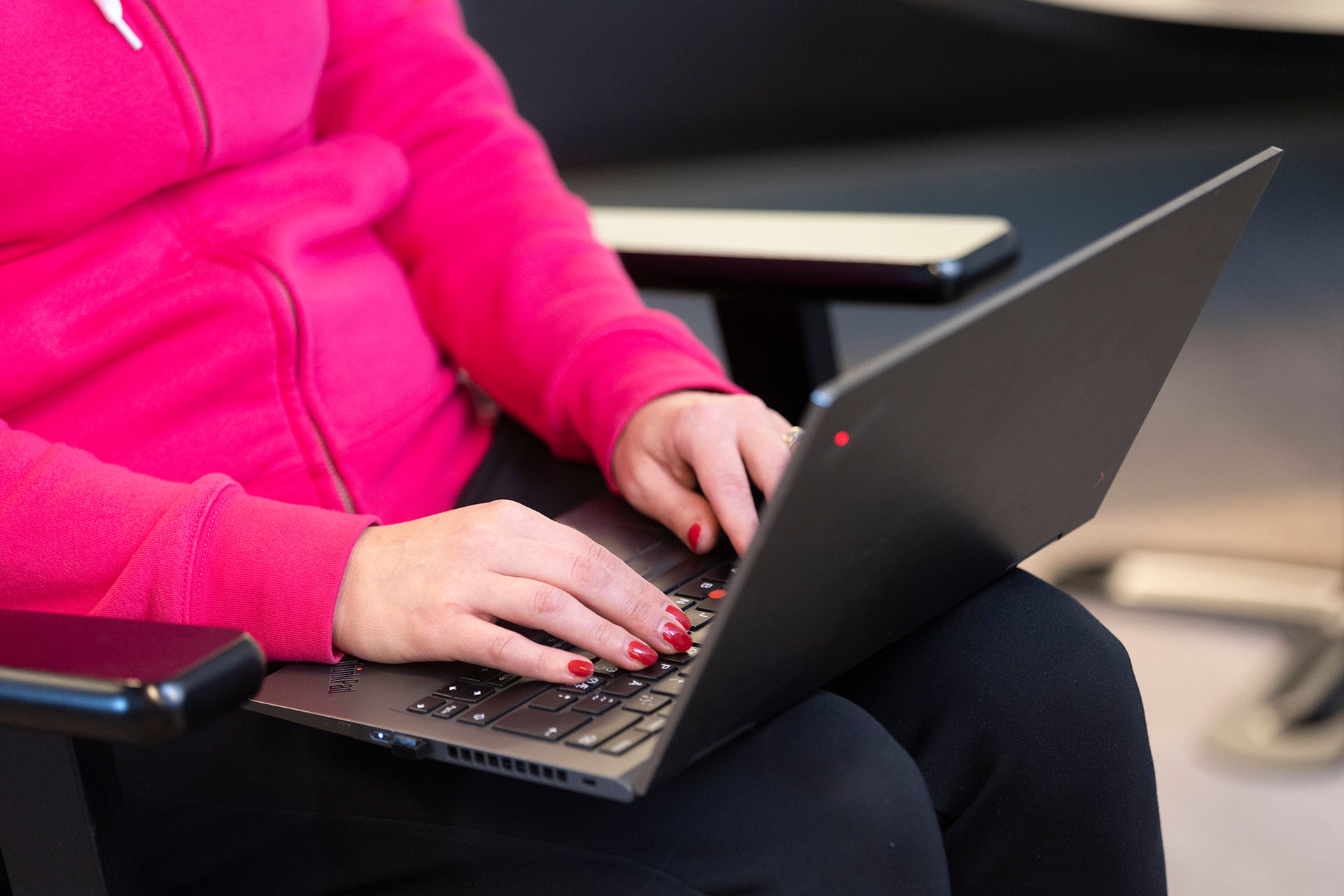
For Pinjans, new ideas and actions for sustainability are a meaningful part of their work. We work to help our clients reduce their energy consumption through a range of digital solutions. We also wanted to get involved in the national Down a degree campaign to save electricity so that there is enough for everyone. Many Pinjans took up the challenge, and came up with tips to save electricity.
The tips shared by Pinjans were varied, depending on the type of everyday life they were suited to and the type of equipment or measures needed. In addition to saving electricity, its use was optimized away from high consumption hours, resulting in cheaper electricity and better availability of electricity for every household. Kati Haapamäki, iPES system software developer at Pinja, coded a remote-controlled automatic timer that allows her parents to optimize the electric heating for cheaper hours, among other things.
Remote automatic timers can be used to control electricity consumption during peak hours
The idea to automate electric heating came from Kati’s stepfather, who had heard of a similar solution. The main heating system in their house is oil-fired, with an additional electric heater for the hot water tank. However, as the price of electricity rose, her parents realized that an electric heater that was always on was more expensive than oil heating, and they began to think about ways to save electricity.
- My stepfather had heard about a system that someone had set up to get the prices of electricity from the internet, and switch off the electricity during the highest prices. I stumbled upon a system that Lari Lohikoski had created for himself, which he had shared information and code about on his website. I thought that this could be a good system, and decided to try it, Kati says.
The price of electricity is an incentive to find different solutions. This system doesn’t actually save electricity, but diverts the consumption to cheaper hours. It does, however, also reduce the need for fossil fuels.
Kati tried the code snippet mentioned by Lohikoski on his website. However, the solution was not suitable for Kati’s parents out of the box – there was a need for something different.
- It was coded to be on for a few hours at night and only worked during the cheapest hours of a certain time period. We needed a system that would turn on the electricity whenever the price was low. I thought that it would be better to make my own script for it, Kati says.
However, there were challenges along the way that Kati had not anticipated. Testing the system proved to be difficult because the code had to be uploaded and debugged remotely. Kati had to work around some of the hardware limitations with various tweaks. The version of JavaScript that the relay understood was also very stripped down.
- You couldn’t do the same things that you could normally do with JavaScript. Even the simplest things required some head scratching. I ended up making a big pile of date functions, because the JavaScript libraries were not available as such. It resulted in extra work, but it was fun, Kati says. She developed the solution in about a week in her spare time.

Image 1. Shelly 3-phase relay connected to the heating system
Now the Shelly 3-phase relay and Kati’s code is in use in her parents’ boiler room, where it is connected to the original electric heating system. The solution retrieves the price data every two hours from the entso-e open energy data service, which it decodes into a program to control the electricity on and off according to the price.
- In a way, it’s still in the prototype phase, but it works well. The goal is to make a version of the code that I’m happy with, and put it on GitHub for others to find. The price of electricity is an incentive to find different solutions. This system doesn’t actually save electricity, but diverts the consumption to cheaper hours. It does, however, also reduce the need for fossil fuels. It also eases peak periods, which is desirable, says Kati.
Electricity savings with the report from the electricity company
Kati lives in an apartment building, where it is not possible to develop a similar solution. However, she became interested in saving electricity, and set out to find out how much energy the apartment was wasting after receiving an hourly report from the electricity company. The report showed that more electricity was being used at night than she would have expected. The high-consumer turned out to be the underfloor heating in the bathroom.
- I wondered why the electricity consumption is high compared to the average. We turned down the underfloor heating in the bathroom, but left it on. It cut our electricity consumption by about a third and proved to be a sensible move, even though the bathroom floor didn’t feel hot, says Kati.
Kati measured the consumption of desktop computers when not in use with the Shelly relay. The result was 200 watts.
- I have to try a little harder to turn off the desktop computer when I’m not using it. It does boot quickly, so it’s not a big hassle. Laptops are one thing, but when you have a proper gaming machine, it’s smart to turn it off, Kati says.

Image 2. A laptop uses less energy than a desktop computer
Pinjans’ ideas for saving electricity
Many Pinjas were in agreement about the unused appliances and the recommendation to turn them off to save electricity. In many homes, the TV is no longer kept on in the background while other chores are done. It’s also a good idea to turn off the equipment completely, rather than just leaving it in sleep mode. This is made easier by extension cables with a power switch. Other tips for saving electricity shared by Pinjans include:
1. Using an air fryer instead of an oven for cooking
For cooking, Pinjans recommend using an air fryer instead of an oven – the bigger the air fryer, the better. Some have even stopped using the oven altogether for the time being. The use of the cooktop can be reduced by turning it off just as the water is boiling. This way, at least eggs and pasta can be cooked well without having to keep the cooktop on all the time.
2. Using the oven more efficiency or replacing it with a wood oven
It is easy to replace the electric oven with a wood oven, and cook food while heating. For those working remotely, Pinjans gave a tip to leave slow-cooking food in the oven overnight, which has been heated in the evening. This way, food is prepared at night, and is ready just in time for lunch.
3. Reduction in the use of the electric sauna or using it during cheap hours
In many homes, the sauna is the most electricity-consuming part of everyday life. The most popular tip from Pinjans is to reduce the heating of the electric sauna or to heat it during off-peak hours. The solution of one Pinjan was to reduce the frequency of sauna sessions and to arrange joint sauna sessions with relatives living nearby. This saves electricity, and means that you see your family more often.
4. Washing dishes and laundry during cheap hours
Washing dishes and laundry can be scheduled for off-peak hours such as at night or in the morning, diverting the energy use of washing machines to cheaper and off-peak hours. It is also recommended to only wash full drums of laundry.
5. Heating automation
Regarding heating, Pinjans have used home automation to measure the indoor and outdoor temperatures, and adjust the power accordingly for optimal performance. In some homes, the indoor temperature has been lowered by several degrees, and woolen clothing has been introduced.
6. Using the public transport
Pinjans have reduced car heating by leaving their car at home and favouring public transport and walking. In the brisk spring air, electricity is saved, and the sun recharges the batteries of the active outdoor person.
7. Replacing electric heating with wood heating
Pinjans living in detached houses prefer to replace electric heating with wood heating. A heat-storing fireplace and wood stove are good sources of heat.
8. Adjustment of the hot water circulation
One Pinjan saves heating energy and water by shutting off the hot water circulation pump and the circulation pipe, which allows hot water to flow more quickly into the shower. It also works well as a wake-up call.
9. Using the outdoor air to cool food
In cold weather, Pinjans pre-freeze the food on the terrace or balcony before putting it in the freezer. Defrosting the freezer is also easy because food remains frozen outside during the maintenance.
10. Using a heat pump for heating
Mechanical ventilation should be kept clean and in good condition, and also proportionate to the outdoor temperature and the number of people in the dwelling. In warmer weathers, in the Winter, it makes sense to keep the temperature of the heat pump above 20 degrees Celsius so the pump's power can be reduced in freezing temperatures, when the need for electricity use for heating is the greatest.
If you are interested in electricity savings and your own consumption, it is possible to request a report from the electricity company. Some even have their own apps. There are third-party applications to monitor electricity prices, one of which recommended by Pinjans is Liukuri.
Read more
Down a degree campaign
How digitalization is driving sustainability in practice, part 1/2 – how to reduce energy consumption, waste, and the ecological footprint
How digitalization is driving sustainability in practice, part 2/2 – green building to reduce emissions and promote well-being
Back to the Pinja Blog
Categories
- Pinja Career (70)
- Production development (43)
- Software development (43)
- Business Intelligence (42)
- Sustainability (31)
- Digital business (30)
- Circular economy and natural resources (27)
- Ecommerce (23)
- Supply chain management (23)
- ICT services (22)
- Maintenance development (22)
- Digital society (20)
- Industrial digitalization (20)
- ERP (18)
- Forest industry ERP (14)
- Industrial innovation (11)
- Health and welfare technology (9)
- Artificial intelligence and machine learning (7)
- Lean (4)
- eudr (1)
